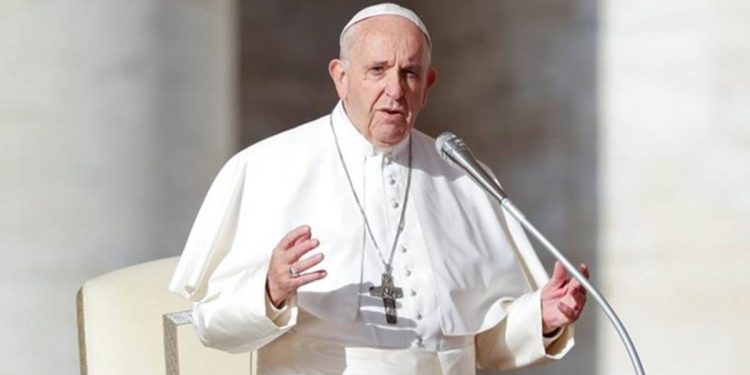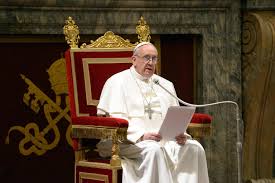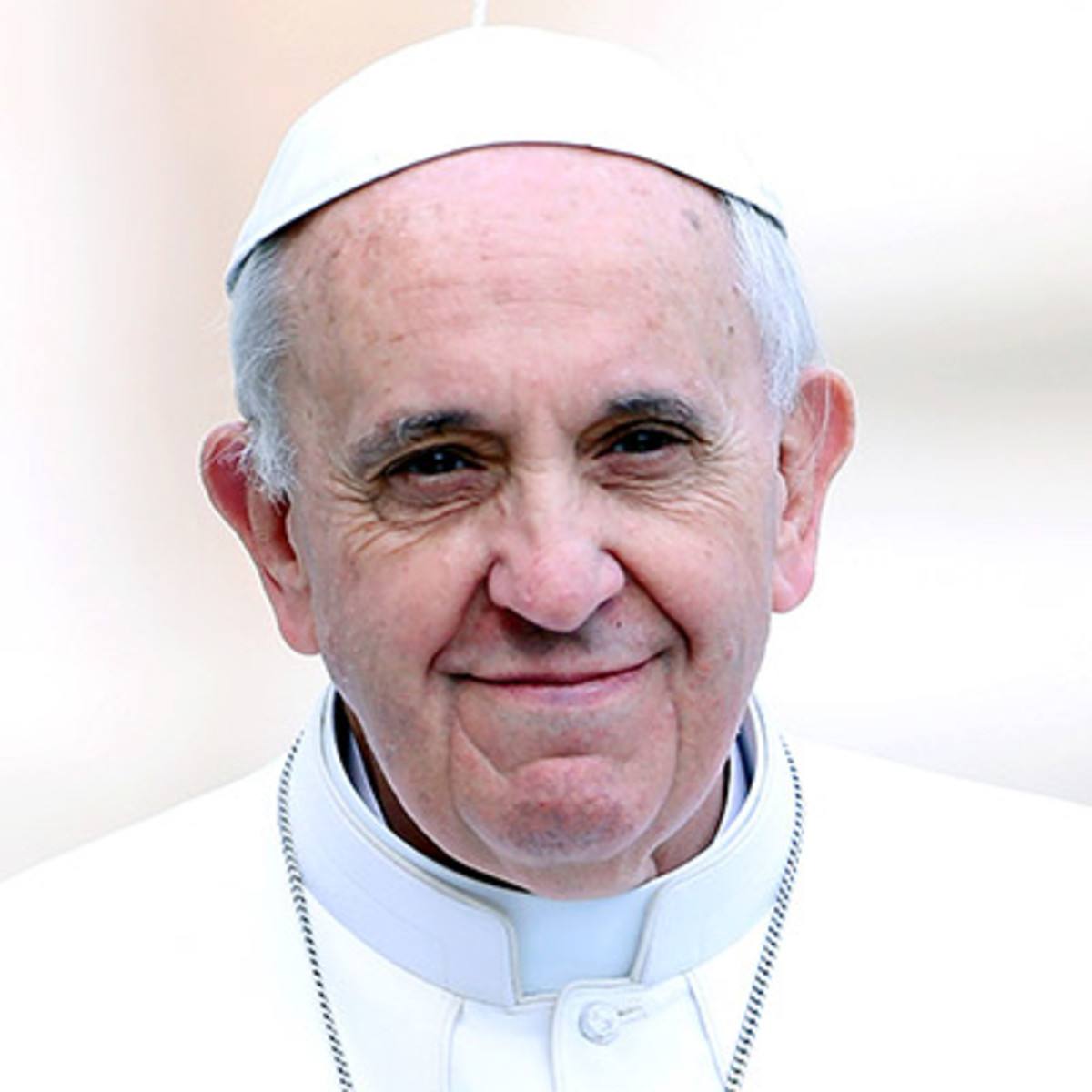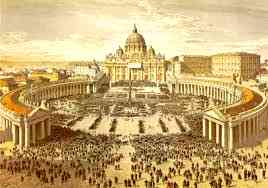Pope Francis and his Motu Proprio Traditionis Custodes—Pt. 1

Pope Francis and his Motu Proprio Traditionis Custodes—Pt. 1
Unless you have been living under a rock, you already know Pope Francis promulgated an Apostolic Letter issued Motu Proprio (by his “personal initiative,” or by his own authority) called Traditionis Custodes, specifically concerning, or subtitled: “On the Use of the Roman Liturgy Prior to the Reform of 1970.”
Even though we had heard rumors of this document coming, I didn’t believe them. Judging by the way Pope Francis had reached out to traditional Catholics in the past, I personally believed Pope Francis would give Summorum Pontificum more time to achieve its goals in the Church. But since reading Pope Francis’ Motu Proprio and the accompanying letter, I must say I was taken by its clarity, brevity, and its direction forward for the Church. The responses from certain sectors of the Church were to be expected. And they deserve to be heard and responded to. Some of these were a bit off the wall, claiming, for example, Pope Francis had no authority to do what he did at all (I will respond to that in Part II of this series). I saw one fellow go so far off the rails, he claimed that in claiming there now to be one “lex orandi” of the Roman Rite, Pope Francis incoherently delegitimized all other rites within the Catholic Church!
Oy vey!
But these are the extreme. Many, I have found, are just plane “confused.” And by their own admission.
But once again—as I find to be the case most of the time—Pope Francis’s teaching and directives are clear. This is not to say the confusion is not real. Much of it is very real though unfortunately caused by pundits immediately and badly miss-representing the pope’s words. But most important to the point here is I want to help as best I can to bring clarity and lessen that confusion among the faithful in whatever way I can.
The History Behind Pope Francis’s Letter
To really understand this Motu Proprio, we need to first do a brief historical sketch to understand the events that led up to its promulgation. I suppose the place to start would be with the response to the reforms of the liturgy of the Roman Rite called for by Vatican Council II and the post-conciliar Church at and after the Council. The most important of these reforms would come from Pope St. Paul VI, via the promulgation of the Missale Romanum (Latin: Roman Missal) in 1969, and which was published in 1970. The Missale Romanum represents the Vatican’s blueprint governing the Holy Sacrifice of the Mass for the largest of the multiple “rites”—small “r”—within the Latin Rite—capital “R”—of the Catholic Church (cf. CCC 1203). These reforms did minimally affect other rites within the Latin Rite, but their main focus involved the Roman Rite within the Latin Rite. In other words, these reforms were not aimed at the Dominican or Ambrosian Rites (as well as the many local “rites” and “rites” attached to religious orders within the Latin Rite), which are rites within the Latin Rite. The idea was to continue a unified, but revised Roman Rite in the tradition of the Council of Trent where Pope St. Pius V had done something similar. He eliminated all of the many “rites” that had relatively recently emerged during a time of both liturgical and theological confusion within the Roman Rite in the two centuries leading up to the Council of Trent. He left untouched all rites in the Latin Rite that were at least 200 years old, such as the Dominican and Ambrosian Rites I mentioned before.
It is important to recall that the promulgation of the Missale Romanum in 1969 (published in 1970) was the legitimate and Church-authorized development of the Missale Romanum of Pope St. Pius V mentioned above and popularly known as “the Tridentine Mass,” after the Council of Trent. In spite of what you may have read from well-meaning Catholics as well as schismatics, the Mass of St. Paul VI—as I will refer to it—was not a “new Mass.” In fact, there is no such thing as a “new Mass” in Catholic theology. Each and every of the seven Major Rites in the Church, along with the manifold smaller rites, present accidentally different external forms of the essentially same Holy Sacrifice of the Mass that makes present the “once-for-all” sacrifice of Jesus Christ offered on Calvary’s cross 2,000 years ago (Heb. 10:10; CCC 1330).
The Mass of St. Pius V that was the antecedent of the Mass of St. Paul VI had been edited multiple times over the centuries since its promulgation in 1570—Clement VIII revised it in 1605, Urban VIII in 1634, Leo XIII in 1884, Benedict XV in 1920, Pope Pius XII in 1955, and finally Pope St. John XXIII in 1962. From here on out, I will refer to the Mass of St. Pius V as “the 1962 Missale Romanum,” “the 1962 Roman Missal,” or just “the 1962 Missal” for clarity as well as brevity’s sake.
It is very important to remember that when Pope St. Paul VI promulgated the Missale Romanum in 1969 (published in 1970), he never abrogated the 1962 Missal. He derogated it. In Canon law, “derogation” means the partial suppression of a law, as opposed to abrogation, which means the total repeal of a law (see: Apostolic Constitution, Missale Romanum – On the New Roman Missal, April 3, 1969).
It was not that Pope St. Paul VI could not have abrogated the 1962 Missal. He’s the pope (see Part II of this series). But his Holiness specifically made allowances for especially older priests—and for any priest who had just reason—to be granted by special permission to continue to pray the 1962 Missal. This does not appear to have been ever intended to be a permanent allowance. It was by temporary indult or permission. But this was, as Pope St. Paul said, a matter of “derogation,” not abrogation. Thus, the 1962 Missal could be used in the Church, but only by indult (special permission).
Well, as we all know, Bishop Marcel Lefebvre became the leader of a small priestly fraternity that would be and is called the Society of Saint Pius X (SSPX) that dissented from not only the Pope’s teaching and directives concerning the 1970 Missale Romanum, but sadly called into question the legitimacy of aspects of Vatican II, the proper juridical authority of the popes in general, and more, leading to an act of grave disobedience via the illicit ordination of four bishops that brought about his and the said four bishops’s excommunications latae sententiae (Latin: “of a sentence passed.” In Canon Law: “a sentence effective automatically.”). And this sadly occurred in 1988.
Before the excommunication, both Pope Sts. Paul VI and John Paul II were trying to reconcile the SSPX. And in 1984, as part of this attempt, the Congregation for Divine Worship, with the approval of Pope St. John Paul II, granted an indult, or a special permission for priests to say the 1962 Missal in a much more generous way than Pope St. Paul VI had allowed before him (Quattuor abhinc anno, Oct. 3, 1984, and confirmed four years later in the Motu Proprio Ecclesia Dei). And then, in 2007, in another Motu Proprio, Summorum Pontificum Pope Benedict XVI made that permission even more generous out of both that same desire for unity in the Church and from Benedict’s perspective, even more importantly, so that all involved would understand that the Council and post-conciliar popes were not about, in any way, saying the the Missale Romanum of Pope St. Pius V was somehow bad. Or that tradition is a bad thing. It was not. And it is not. In fact, the Mass of St. Pius V represents some of the very best of Catholic tradition. Did it need revision? Yes. But like all true tradition in the Church, it was and is beautiful and a powerful expression of the Catholic Faith and the perennial worship and belief of the Bride of Christ.
In a word, folks, Pope Benedict XVI was confirming the perennial truth that development in the Church does not equate to saying what went before it was defective, or, in error.
But unfortunately, this was what many among those who prefer the 1962 Missal believed the Church was saying. Of course, the Church was not. Now, in the process of attempting healing in the Church what Pope Benedict did seemed to go a bit against the tide of what Vatican II and the post-conciliar popes had been doing. I say “a bit” because it was anything but a drastic reversal or anything close to that. But it was something novel. He did not go back to a pre-Tridentine situation of having multiple “rites” within the Roman Rite that had bred novelty and theological confusion within the Latin Rite back then. He maintained the clear conciliar desire for there to be one Roman Rite within the Latin Rite of the Church. However, he created the novel idea of there being two forms of that one Roman Rite—the two forms Pope Benedict called “the ordinary” (the Mass of St. Paul VI) and “extraordinary” (the Mass of St. Pius V, specifically the 1962 Missale Romanum) forms of the same Roman Rite. And the hope was that this would bring about mutual benefit. Perhaps the “extraordinary” form would bring about an effect of bleeding over a sense of mystery and beauty to the “ordinary form.” And perhaps the “ordinary form” would bring about a greater sense of the need for intellectual comprehension as well as a deeper participation in the Mass to the “extraordinary” form. Perhaps both would meet at some undetermined omega point. I don’t know how one could not see a stroke of genius here. And you would have the added bonus of keeping a substantial number of Catholics attached to the 1962 Roman Missal from leaving full communion with the Catholic Church at the same time. You would be saving souls (see Lumen Gentium, 14).
That was the hope.
So what happened?
Pope Benedict XVI had requested a thorough review be initiated three years after the publication of Summorum Pontificum to see how or if the desired goals were being met. Pope Francis took Benedict up on that call a full thirteen years later, but upon investigating the situation on the ground through a survey of bishops, he found a situation that had become counterproductive. Rather than sparking unity and growth, the two forms of the one Roman Rite (“extraordinary” and “ordinary” forms of the Roman Rite, or Missale Romanum) had become a source of division. Sadly, Pope Francis declared, some among the proponents of what was “the extraordinary form” were calling into question the post-conciliar reforms of Vatican II, and even the Council itself. Some even referring to those celebrating the 1962 Missal as representing “the true Church,” in relation to a counterfeit that had sprung from the Council, which is absurd, of course.
I find it impossible to disagree with Pope Francis on one level. It is a sad fact that there is a tendency among Catholics who have an attachment to the 1962 Missale Romanum to call into question everything Pope Francis said and more. I deal with them on a regular basis as an apologist. However, I personally would have liked there to have been more than 13 years to make this decision, as I said before. However, I will also say Pope Francis knows much more than I do. And I will trust his wisdom and the guidance of the Holy Spirit on this. He’s the pope. I am not.
But whether one agrees or not with the pope’s timeline, the truth is, Pope Francis abrogated Summorum Pontificum and has given the Church a more definite trajectory forward and clearer direction than she has had, perhaps, since the sad situation of dissent that led to the creation of the SSPX and other like-minded groups.
What Does This Mean?
It seems the goal has always been generally the same in the Church since the Council: A unified Roman Rite. In fact, that goal was accomplished in 1970. There was more work that needed to be done. There were wrinkles to be ironed out. This is why St. Paul VI stated in Missale Romanum mentioned above that he “was leaving room in the new Missal,” according to the order of the Second Vatican Council, “for legitimate variations and adaptations” (citing Sacrosanctum Concilium, Art. 38). But we essentially had one Roman Rite existing in the Latin Rite of the Church, by way of the 1970 Missale Romanum. However, this that seemed clearly to be the movement of and from the Council was effectively placed in a kind of suspended animation with the advent of something the Council fathers never imagined in the SSPX and other smaller dissenting Catholic communities. The result of this dissent and eventual schism, along with the accommodations made by the popes for a more generous allowance for the usage of the 1962 Missal created, effectively, two forms of the one Roman Rite. And mind you, this is not the Ambrosian Rite, or the Dominican Rite, which are, again, rites within the Latin Rite. But this became a—sort of—Roman Rite within the Roman Rite within the Latin Rite.
Many, it seems, were hoping Summorum Pontificum could represent a providential and new way forward in the Latin Rite in a permanent sense. They believed Pope Benedict XVI’s extension of permission to say the 1962 Missal, for example, for all priests saying “private Masses” without needing permission from their Ordinary to indicate this more permanent way forward. And, of course, this is certainly possible. The pope has supreme authority in the Church. And if the Holy Spirit were to move the popes in that direction, there could certainly be two expressions of the one, Roman Rite, however, counter that might seem to the tradition.
In the end, not only was there no indication from the Church that this arrangement was deemed to be a permanent arrangement, but at least from Pope Francis’s perspective, it definitely was not intended to be a permanent “fix.” His abrogation of SP makes that clear. And certainly, this seems in keeping with the intention of both Vatican Council II and the post-conciliar Church.
The bottom line: this means there are no longer “extraordinary” and “ordinary” expressions of the one, Roman Rite within the Latin Rite of the Catholic Church. Pope Francis has clearly and authoritatively declared in TC: “The liturgical books promulgated by Saint Paul VI and Saint John Paul II, in conformity with the decrees of Vatican Council II, are the unique expression of the lex orandi of the Roman Rite” (Art. 1). This declaration has effectively brought the Church back to the clear course charted by Vatican Council II and the post-conciliar popes.
Where Do We Go From Here?
As one sympathetic to those who have an attachment to the 1962 Missal, I think it is good news that Pope Francis did not abrogate the 1962 Missal. In some ways, Pope Francis has taken us back to where we were before SP when the Church was permitting the usage of the 1962 Missal in accordance with the indult granted by Pope St. John Paul II. Pope Francis has delegated the authority to the bishops of the Roman Rite to determine where or if in their respective dioceses there would be an allowance for the usage of the 1962 Missal. Pope Francis has stated that if it could be shown that there is a legitimate need and that the community celebrating the 1962 Missal demonstrates that it does not present, among its members, a schismatic mindset that would call into question the authority of Vatican II, the post-conciliar reforms, the legitimate jurisdictional authority of the pope, or any other essential Catholic teachings or practices, they could continue to offer the Mass employing the 1962 Missal.
The above is not much different from what we had in the Church pre-SP. But in other ways, Pope Francis has made the Church’s way forward clearer. There can be no doubt of the fact that Pope Francis has taken us back to the clear intention of both the Council of Trent—accomplished in 1570, with the promulgation of the Mass of St. Pius V—and Vatican Council II—accomplished with the promulgation of the Mass of St. Paul VI in 1969(70)—as well as the post-conciliar popes. We now have realized in the Church de jure a single Missale Romanum and one lex orandi for the Roman Rite a la Article One of TC:
The liturgical books promulgated by Saint Paul VI and Saint John Paul II, in conformity with the decrees of Vatican Council II, are the unique expression of the lex orandi of the Roman Rite.
I can only wish all documents from the Vatican would be this clear! Here, Pope Francis makes clear that we have returned to the clarity of Pope St. Paul VI in 1970. There is one Missale Romanum for the Roman Rite. This does not mean that there cannot be an indult—and there is—for the usage of the 1962 Missal. But that is by indult. And, according to Pope Francis, this must be understood to be temporary. In the accompanying letter Pope Francis promulgated to make his actions and underlying motives clear, he called upon the bishops to take the helm in bringing about the full implementation of his manifest will as Roman Pontiff in these matters:
It is up to you to authorize in your Churches, as local Ordinaries, the use of the Missale Romanum of 1962, applying the norms of the present Motu proprio. It is up to you to proceed in such a way as to return to a unitary form of celebration, and to determine case by case the reality of the groups which celebrate with this Missale Romanum.
Indications about how to proceed in your dioceses are chiefly dictated by two principles: on the one hand, to provide for the good of those who are rooted in the previous form of celebration and need to return in due time to the Roman Rite promulgated by Saints Paul VI and John Paul II, and, on the other hand, to discontinue the erection of new personal parishes tied more to the desire and wishes of individual priests than to the real need of the “holy People of God.”
In order to facilitate the movement of the Roman Rite toward fully realizing in practice what Pope Francis has declared de jure the Holy Father declared there are to be no more new parishes or “groups” established wherein the 1962 Missal would be permitted. Moreover, the bishops of each diocese in the Latin Rite will determine whether or not there is a true need for the 1962 Missal’s usage. And in the dioceses where the bishop determines there is a need, the 1962 Missal should not be said in parochial churches. It should be prayed in chapels or some other fitting and sacred space. However, in Art. 5 of TC there is allowance for the bishop to permit parishes canonically erected for the celebration of the 1962 Missal to continue if the bishop deems it spiritually beneficial for the spiritual growth of the people of God.
But the bottom line is this: Pope Francis has made clear the way the Church is to move forward in coming years. There is now clearly “one lex orandi for the Roman Rite” of the Catholic Church. And that is following in the footsteps of hundreds of years of the there being one lex orandi for the Roman Rite. This seems clear as well as in keeping with the tradition of the Church.
For those who love Latin and would like to see it preserved to a greater degree in the Liturgy. In the San Diego Diocese, we have a parish that celebrates the Mass of St. Paul VI in Latin every Sunday night. It seems this may be the way to go forward. In a future blog post, I will explain what you don’t hear very often, but needs to be heard more often; and that is, why I believe the Mass of St. Paul VI is, in many ways, a true development and even improvement over the Mass of St. Pius V, as good and holy as it is. This is not a case of the Church going from bad to good; rather, as with all development in the Church, we went from good to better.
But before we go there, in my next post, I want to respond to some of what I have heard and read about Pope Francis’s Motu Proprio. What it is. What it is not. What the pope can and cannot do, and more. So stay tuned and we’ll chat.





